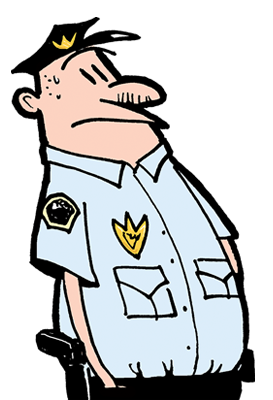My second post in the series was called, prosaically enough, “
How the media misleads on police violence Part 2,” and it regarded how the issue of people being killed by police is much greater than the news media leads us to believe, and how the issue of police being killed by people has been inflated by its national news media coverage.
I want to make three points with this final post of the series. First, it’s not the last post on this topic; it’s just the last one that’s going to include the words “How the media misleads” in the title. Second, I think an officer would be crazy not to go to work fearing for their life, even though the odds are far less that he or she would be injured or killed than if they were going to a job on a farm. Third, social media has dramatically increased awareness and knowledge regarding police violence against people, almost to the point of equalling mainstream coverage of violence against police, which has led to misperceptions about the frequency of deadly police violence on both sides of the equation.
You know why I think police would be crazy not to go to work fearing for their lives? It’s because social media has basically increased their awareness of officers being attacked by more than a factor of seven. Astute readers will say, “But didn’t you say in Part 2, that people could read or see a story about an officer being killed every single week?” Yes, and now it’s daily, multiple times a day, in fact. For example, police belong to many Facebook groups that feature stories about police being harmed.
Blue Lives Matter comes to mind. Police are often friends with other police who are sharing police news, just as many of my friends are other journalists sharing journalism news. That suggests to me that every one of those seven formulaic officer-down stories I mentioned in Part 2 is being liked, shared and re-tweeted on social media. It’s not that violence against police is increasing-in
actual numbers, it’s well within highs and lows of the last 20 years, and
police gun deaths have decreased 23 percent from last year-it’s the awareness, and the fear it generates among police that has increased.
And the same is true for people who are anxious about police violence on people. I follow groups that are concerned about this issue, like Facebook’s
Disarm The Police In America, and I have a lot of friends who talk about this issue, and they’re constantly sharing and commenting on this topic. As I write this-and it’s hard to quantify because … Facebook-I’ve got 14 posts on my page about people who died in encounters with police. If I didn’t have Fatal Encounters data to contradict the evidence of my senses, I would think that there has been a substantial increase in police violence since Jace Herndon died in Reno on May 18, 2012, which is when I started paying attention. But, no, the number of deaths is flat. What has changed is that news that was local in the past is now national and amplified because of my particular interests on social media
Perception is reality. And in this instance, perception is also media gaslighting.
I really wish I’d been more thoughtful in my naming of this series of posts. The name implies comprehensiveness, but I was really trying to explore this particular area of news/social media intent to sell newspapers, generate clicks, evoke emotions, drive engagement, whatever.
I can easily think of many methods the news media uses to mislead consumers about the realities of police violence that I never talked about in these three pieces: Use of passive or convoluted police grammar; use of mug shots (Fatal Encounters sometimes uses them to verify race), publication of police press releases without scrutiny, withholding information about suicides, teenagers, and officers involved-the list could be a post on its own.
Bonus post! This is today’s update on the crowdfunding campaign. I’m interested in people’s thoughts about the proposed new categories for the data:
Happy Sunday before Labor Day! I think three-day weekends are probably not the best times to raise money. You know what else slows it down? In Reno, Burning Man has impoverished and taken many past contributors out of town. Hurricane Harvey has also taken quite a bit of cash out of the available pool. Deservedly, I might add. All that being said, a single donation of $5,000 more than doubled what we’d raised thus far. We’re just over the halfway point of the campaign, and at 36 percent of operating capital for the next six months, now is when the hard work of fundraising begins.
I’ll give you guys a preview: Tomorrow, I’ll complete the research on New Jersey 2012, which will complete our 46th state. On Tuesday, I’ll send out updated national numbers back to 2000 on social media, which always generates interest and sharing. Also beginning on Tuesday, I’ll send out a few personal emails a day to past donors for the remaining days of the campaign.
Finally, I’ve got a completed draft of the
categories for Phase II of the project. I’m still accepting comments and additions, so feel free to chime in. I know many of you are familiar with the current sheet, but for those who aren’t,
this is the datathat’s been shared around the world.
D. Brian Burghart



